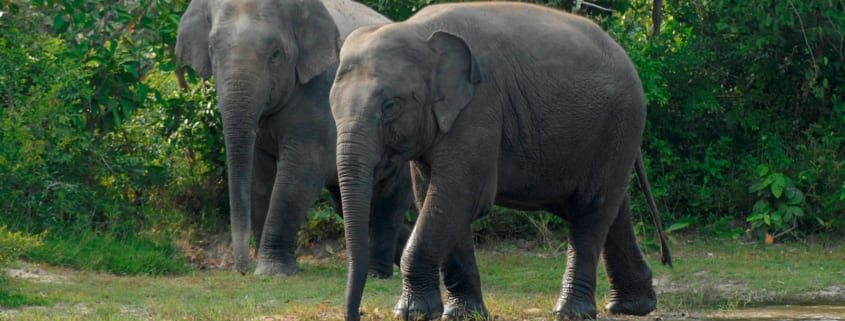Giant Creatures Make Homes for Tiny Creatures
Elephants are, to state the obvious, very big. I mean, have you ever stopped and looked at one of them? They’re huge, massive, enormous creatures. They’re so big, their hearts only beat every two seconds—that’s 30 beats per minute. Count it out—it’s a long time between beats in their giant, oversized, gargantuan hearts. A low human heart rate is 60 beats per minute. Mouse hearts can beat up to 840 times per minute.
But the elephant—just once every two interminable seconds.
Their size helps them become what ecologists call “ecosystem engineers.” That means that they can alter the landscape drastically enough to affect ecosystem function. For example, elephants can turn wooded areas into grasslands by trampling and knocking down vegetation. By doing so, they create space for grassland species to thrive. Elephant dung fertilizes and seeds these grasslands and their digging for water opens up watering holes for other, less bulldozer-like species.
Many species have places to live, eat and drink thanks to elephants. And a recent paper found more of those species.
Researchers in Myanmar studied flooded elephant footprints and found frog eggs and tadpoles living in them. They determined that the footprints were an important breeding habitat for the frogs. They may even be “stepping stone” habitat for frogs between larger habitats such as ponds or wetlands.

Apartment construction for frogs.
These footprints can last—and I’m serious here—for more than a year. Groundwater apparently helps these pools persist throughout the dry season. These footprint in-ground pools are clearly more than temporary housing for their amphibian tenants.
The paper also included this gem of a quote: “Water-filled elephant tracks are in effect small lentic waterbodies created when elephants walk across a substrate unable to support their great bulk without being modified.” Meaning: Elephants make these footprints when the mud is real squishy.
“Elephant tracks are virtual condominiums for frogs,” said Steven Platt, the study’s lead author. “This study underscores the critical role wildlife play in ecosystems in sometimes unexpected ways.”
This isn’t the first time researchers have found a link between elephant ecosystem engineering and amphibians. A few years ago, scientists found a positive correlation between amphibian diversity and the level of elephant activity in study plots in Tanzania.
So let’s recap: Giant creatures step all over squishy dirt, making tiny pools. Tiny creatures then live in those tiny foot-pools.
What a magical planet we live on.
Header photo by Wildlife Alliance.





